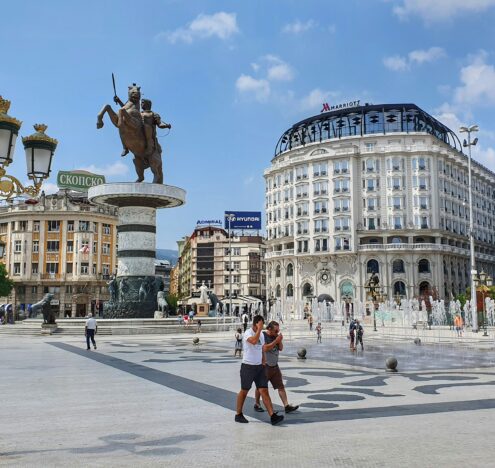What, exactly, is behind the rise of support for populist radical right parties in Europe over the past several years? That is the question Oren Danieli, Noam Gidron, Shinnosuke Kikuchi, and Ro’ee Levy set out to answer in their new paper, “Decomposing the Rise of the Populist Radical Right.”
The authors considered the period from 2005 to 2020 and looked in particular at changes in party positions; changes in voter opinion and demographics; changes in voter priorities; and a residual (a component that “captures factors such as changes in unobserved party positions or valence, model misspecification, and new entrants”).
They then merged wide datasets on party position and voter attributes and used a probabilistic model to estimate voter priorities. This took in roughly 60,000 responses from 22 European countries. The authors divided it into three waves: 2005-2009; 2011-2013; and 2017-2020.
“Nativist Cultural Positions”
What they found is that change in party positions and voter attributes were actually less important than change in voter priorities: it was what voters decided to start caring most about that fueled these parties’ rise. It wasn’t the parties’ economic positions that voters cared about, the researchers found, so much as it was that voters — and especially men who were not in unions and were less educated — began prioritizing “nativist cultural positions.” (It is worth noting that this shift did not appear for college graduates, women, younger voters, union members, and voters who lived in urban areas; in fact, in some cases, they shifted to the political left.)
Over the past decade, voters have started to prioritize cultural issues specifically over economic ones.
Over the past decade, voters have started to prioritize cultural issues specifically over economic ones. This, the research suggests, means that there is a well of sentiment in a part of the population into which populist politicians can easily tap.
The researchers used the same datasets to determine three things: that parties’ positions have changed, but not in a way that is consistent with “supply-side hypotheses for populist support”; that voters have not adopted populist rightwing views on aggregate; and that voters self-identify ideologically based on their cultural views, as opposed to economic opinions.
But Why?
The authors explain that they are not trying to introduce yet another factor into explaining the rise of right-wing populist parties. Rather, they hope to introduce a framework for organizing how to think about the factors with which we are already familiar.
The researchers argue that their work contributes to the literature on populism. Additionally, the “decomposition method” that they used could be applied to other trends, too.
They also flag an outstanding issue outside the scope of their research. Why did cultural issues become more important than economic considerations? There are reasons other researchers have suggested, ranging from rising incomes to smart phones and social media to trade shocks. But the reality is that there was indeed a change, one that reshaped the political face of Europe. Better understanding the source of that shift, the authors write, is a “promising path” for future work.





















